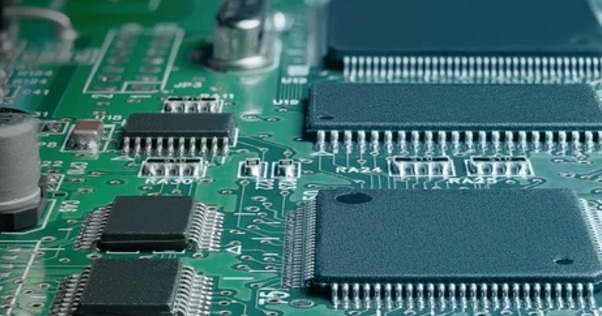Content Menu
● Understanding Surface Mount Technology
>> Advantages of Surface Mount Technology
● Best Practices for Soldering in Surface Mount Technology
>> Prepare Your Workspace
>> Select the Right Tools
>> Understand the Soldering Process
>> Control Temperature
>> Inspect Solder Joints
>> Practice Good Technique
>> Avoid Common Mistakes
● Conclusion
● Related Questions
>> 1. What Is Surface Mount Technology?
>> 2. What Are Common Defects in SMT Soldering?
>> 3. How Can I Improve My Soldering Skills?
>> 4. What Types of Solder Are Used in SMT?
>> 5. How Do I Choose Between Hand Soldering and Automated Processes?
Surface mount technology (SMT) has become a cornerstone of modern electronics manufacturing. It allows for the assembly of high-density electronic circuits with greater efficiency and reliability than traditional through-hole techniques. However, the effectiveness of SMT heavily relies on proper soldering practices. This article will explore the best practices for soldering in surface mount technology, ensuring high-quality connections and minimizing defects.

Understanding Surface Mount Technology
Before diving into soldering practices, it's crucial to understand what surface mount technology entails. SMT involves mounting electronic components directly onto the surface of printed circuit boards (PCBs). This method contrasts with traditional soldering techniques where components are inserted into holes drilled in the PCB.
Advantages of Surface Mount Technology
Higher Component Density: SMT allows for smaller components, enabling more compact designs.
Reduced Manufacturing Costs: The automated processes associated with SMT can lower labor costs and increase production speed.
Improved Performance: Shorter lead lengths reduce inductance and resistance, enhancing electrical performance.
Best Practices for Soldering in Surface Mount Technology
Soldering in SMT requires precision and attention to detail. Here are some best practices to ensure successful soldering:
Prepare Your Workspace
A clean and organized workspace is essential for effective soldering. Ensure that your work area is free from dust and debris, which can contaminate solder joints.
Use Anti-Static Mats: These mats help prevent electrostatic discharge (ESD) that can damage sensitive components.
Proper Lighting: Good lighting is necessary to see small components clearly.
Select the Right Tools
Using the appropriate tools can significantly affect the quality of your solder joints.
Soldering Iron: A fine-tipped soldering iron is ideal for SMT work. Temperature-controlled soldering stations are recommended to maintain consistent heat.
Solder Wire: Use rosin-core solder wire that is suitable for electronics. A diameter of 0.5mm to 1mm is generally ideal for SMT applications.
Tweezers: Precision tweezers are essential for handling small components without damaging them.
Understand the Soldering Process
The basic steps involved in soldering SMT components include:
1. Apply Flux: Flux helps clean the surfaces and promotes better adhesion of solder to the metal surfaces.
2. Position Components: Use tweezers to place components accurately on the PCB pads.
3. Heat the Joint: Place the soldering iron tip against both the pad and component lead simultaneously.
4. Feed Solder: Introduce solder wire into the joint until it flows smoothly around the connection.
5. Remove Heat: Once sufficient solder has been applied, remove the heat and allow it to cool naturally.

Control Temperature
Temperature control is critical in SMT soldering to avoid damaging components or creating cold joints.
Optimal Temperature Range: Generally, a temperature range of 350°C (662°F) is suitable for most leaded solders used in SMT.
Avoid Overheating: Prolonged exposure can damage sensitive electronic parts, so always be cautious with heat application.
Inspect Solder Joints
After soldering, inspect each joint carefully to ensure quality connections.
Visual Inspection: Look for shiny, smooth joints that have a concave shape. Dull or rough joints may indicate poor connections.
Use Magnification Tools: A magnifying glass or microscope can help identify defects that are not visible to the naked eye.
Practice Good Technique
Proper technique is essential for effective soldering in SMT:
Angle of Iron: Hold the soldering iron at a slight angle (about 45 degrees) when applying heat.
Solder Application: Apply solder from the opposite side of where you are heating to ensure even distribution.
Avoid Common Mistakes
Several common mistakes can compromise your solder joints:
Cold Joints: These occur when there isn't enough heat applied during soldering, leading to weak connections.
Bridging: This happens when excess solder connects two adjacent pads unintentionally, creating short circuits.
Conclusion
Soldering in surface mount technology requires a combination of skill, knowledge, and practice. By following these best practices—preparing your workspace, selecting appropriate tools, understanding the soldering process, controlling temperature, inspecting joints, practicing good technique, and avoiding common mistakes—you can achieve high-quality results in your SMT projects. As technology continues to evolve, staying updated on new techniques and tools will further enhance your capabilities in this field.

Related Questions
1. What Is Surface Mount Technology?
Surface mount technology (SMT) refers to a method of mounting electronic components directly onto the surface of PCBs rather than inserting them through holes.
2. What Are Common Defects in SMT Soldering?
Common defects include cold joints, bridging, tombstoning (where one side of a component lifts off), and insufficient wetting of pads.
3. How Can I Improve My Soldering Skills?
Improving your skills involves practice, using high-quality tools, learning from experienced professionals, and studying best practices in SMT assembly.
4. What Types of Solder Are Used in SMT?
Lead-free solders such as SAC305 (tin-silver-copper) are commonly used due to environmental regulations; however, leaded solders are still prevalent in some applications.
5. How Do I Choose Between Hand Soldering and Automated Processes?
Choosing between hand soldering and automated processes depends on factors like production volume, complexity of assembly, cost considerations, and available resources.




















